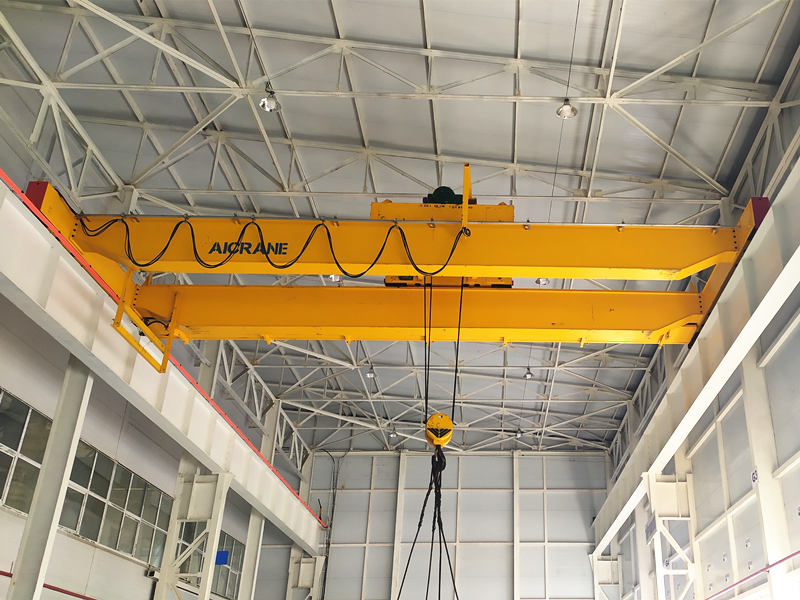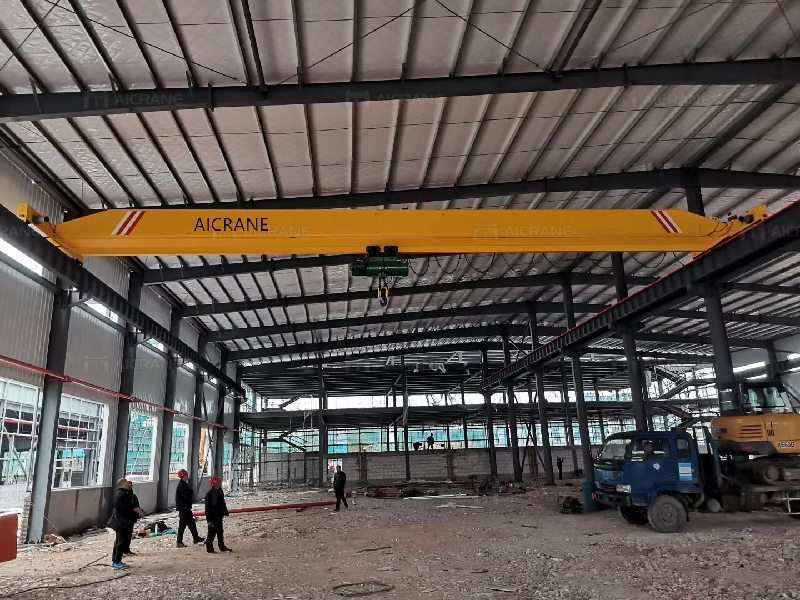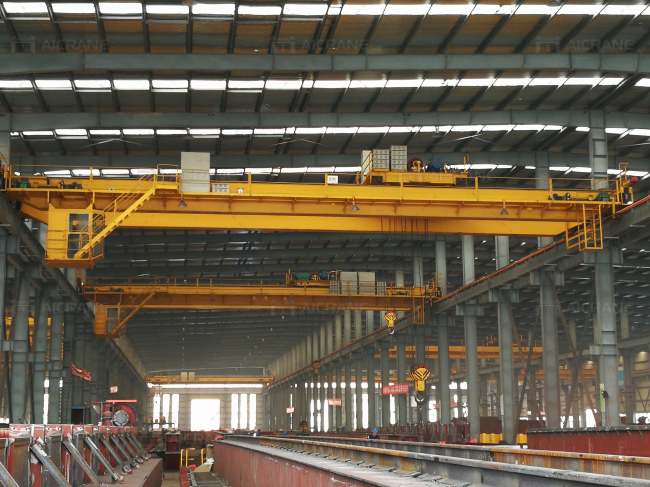Warehouse cranes, especially in industrial settings, play a vital role in lifting and transporting heavy materials with precision and efficiency. However, their operation comes with inherent risks, making safety a top priority for operators and employers alike. In this article, we will discuss essential safety tips for operating warehouse cranes, while also focusing on selecting reliable overhead crane suppliers, understanding the importance of industrial EOT (Electric Overhead Traveling) cranes, and the specific benefits of a double girder overhead bridge crane.

1. Regular Maintenance and Inspection of Cranes
a. Pre-Operation Checks
Before operating any warehouse crane, it is crucial to perform a thorough inspection to ensure the crane is in optimal working condition. This includes checking the hoist, cables, hooks, brakes, and safety features. For example, industrial EOT cranes should be checked for wear and tear on their electrical components to prevent malfunction during operation.
b. Routine Maintenance
Cranes, especially double girder overhead bridge cranes, should undergo routine maintenance as recommended by the overhead crane supplier. Regular checks on structural integrity, lubrication systems, and electronic controls help identify potential issues before they become costly repairs. Scheduled maintenance not only enhances safety but also extends the lifespan of the equipment.
2. Proper Operator Training
a. Certification and Skills Development
One of the most effective ways to ensure safety is to invest in comprehensive training programs for crane operators. Operators should be certified and trained to understand the machinery’s functions and how to operate it safely. In the case of industrial EOT cranes, operators must be familiar with the specific controls for both manual and automated functions.
b. Understanding Crane Limits
Training should also cover the crane’s load capacity and working limits. Overloading a crane is a common cause of accidents. It is essential to follow the manufacturer’s guidelines to ensure that the crane is not used beyond its rated capacity. Operators should be well-versed in how to calculate load weight and ensure safe lifting practices.

3. Ensuring Clear Communication
a. Use of Hand Signals and Radios
Clear communication between the crane operator and the ground crew is critical to prevent accidents. Standard hand signals for crane operations should be used, and if hand signals are not visible, radio communication should be established. This is especially true for double girder overhead bridge cranes, where the operator may be working at a height and may not have clear visual contact with the ground crew.
b. Coordination with Other Equipment
In warehouses with multiple cranes and other heavy machinery, it’s essential to coordinate operations. Ensure that operators and workers are aware of each other’s movements to avoid collisions, especially when using industrial EOT cranes to move large, heavy loads.
4. Implementing Safety Features and Upgrades
a. Safety Barriers and Zones
Safety barriers and demarcated zones around the crane’s operating area can help prevent accidental injuries. These areas should be clearly marked, and access should be restricted to authorized personnel only. This is especially important in warehouses where double girder overhead bridge cranes may operate across large spans, potentially affecting a wide area.
b. Advanced Safety Features
Modern cranes, including industrial EOT cranes, come equipped with advanced safety features such as overload sensors, emergency stop buttons, and anti-collision systems. Working with a reputable overhead crane supplier ensures that these features are included and operational. Installing additional features like warning lights and cameras can further enhance visibility and safety in busy warehouse environments.

5. Load Handling and Rigging Safety
a. Correct Load Rigging
Proper load rigging is essential for safe crane operation. Crane operators should be trained in how to safely attach slings and hooks to the load, ensuring that the weight is evenly distributed. When operating a double girder overhead bridge crane, ensure that lifting devices such as hooks or spreader bars are in good condition and compatible with the load.
b. Avoid Swinging Loads
Swinging loads are one of the most hazardous aspects of crane operation. Crane operators should avoid swinging loads by keeping them as close to the crane as possible. This reduces the risk of injury to personnel and damage to goods. Always maintain a steady, controlled lift, and avoid abrupt starts or stops when operating any type of warehouse crane.
6. Environmental Considerations
a. Lighting and Visibility
Ensure that the crane’s operating area is well-lit, particularly in the early morning or late evening when visibility may be low. Adequate lighting helps crane operators identify hazards and work safely. Additionally, double girder overhead bridge cranes may have greater reach and span, which should be considered when designing the layout of the warehouse.
b. Weather Conditions
Crane operations should be suspended during extreme weather conditions such as high winds, thunderstorms, or heavy snow. Wet or slippery surfaces can also increase the risk of accidents. Always check weather conditions before beginning operations to ensure the safety of both operators and other workers.
7. Load Path Awareness and Obstacles
a. Clear Pathways
It is vital to ensure that the load path is free from obstacles such as debris, machinery, or other obstructions. Before lifting a load with an industrial EOT crane, operators should inspect the pathway and remove any potential hazards. Similarly, double girder overhead bridge cranes, which typically span large areas, should have clear pathways for smooth and efficient operation.
b. Avoiding Overhead Hazards
Be cautious of any overhead hazards such as power lines or suspended equipment. The crane’s lift height should be adjusted to avoid coming into contact with any overhead obstacles. Operators should always maintain a safe clearance from overhead structures to prevent accidents.
8. Working with a Reliable Overhead Crane Supplier
When purchasing cranes, it is essential to choose a trusted overhead crane supplier with a proven track record of quality and safety. Reputable suppliers offer not only high-quality cranes but also comprehensive after-sales support, including training, installation, and maintenance services. They will ensure that your cranes meet safety standards and are equipped with the latest safety features, helping you avoid potential risks.
Conclusion
Operating warehouse cranes in industrial environments can be safe and efficient if the correct safety protocols are followed. Regular crane maintenance, operator training, clear communication, and using the right safety features are key to preventing accidents. Additionally, working with a reputable overhead crane supplier ensures that the cranes you invest in meet the highest safety standards, further protecting your workforce and improving operational efficiency. Always consider incorporating industrial EOT cranes and double girder overhead bridge cranes into your operation for enhanced productivity, especially in demanding warehouse environments. With the right approach, warehouse cranes can significantly contribute to safe and effective material handling operations.